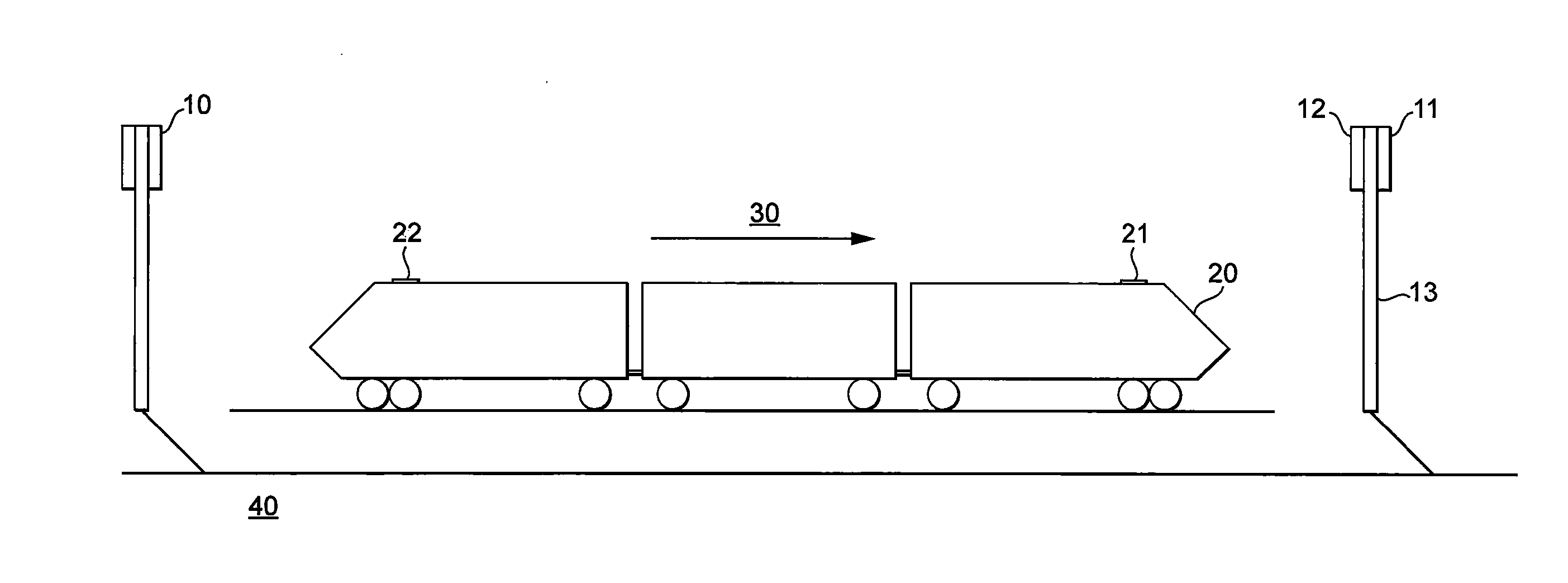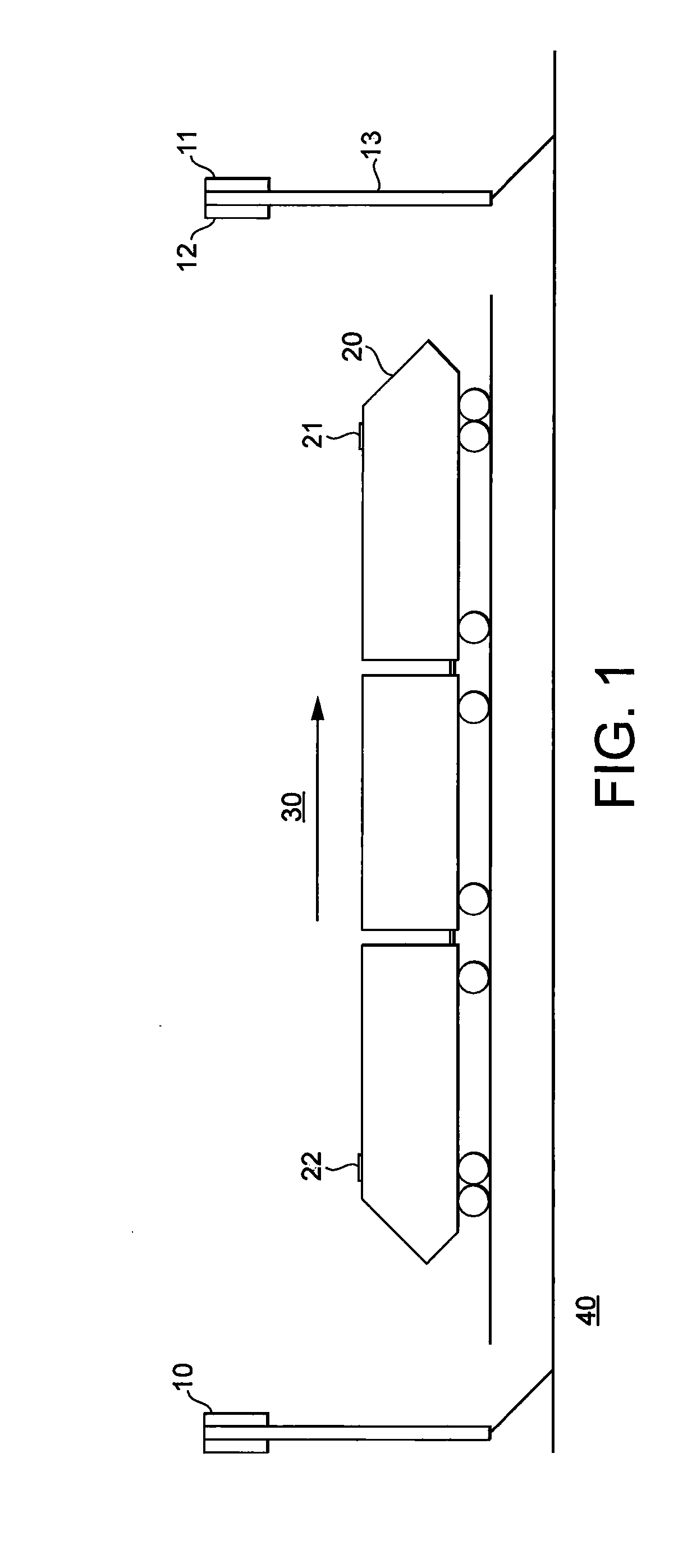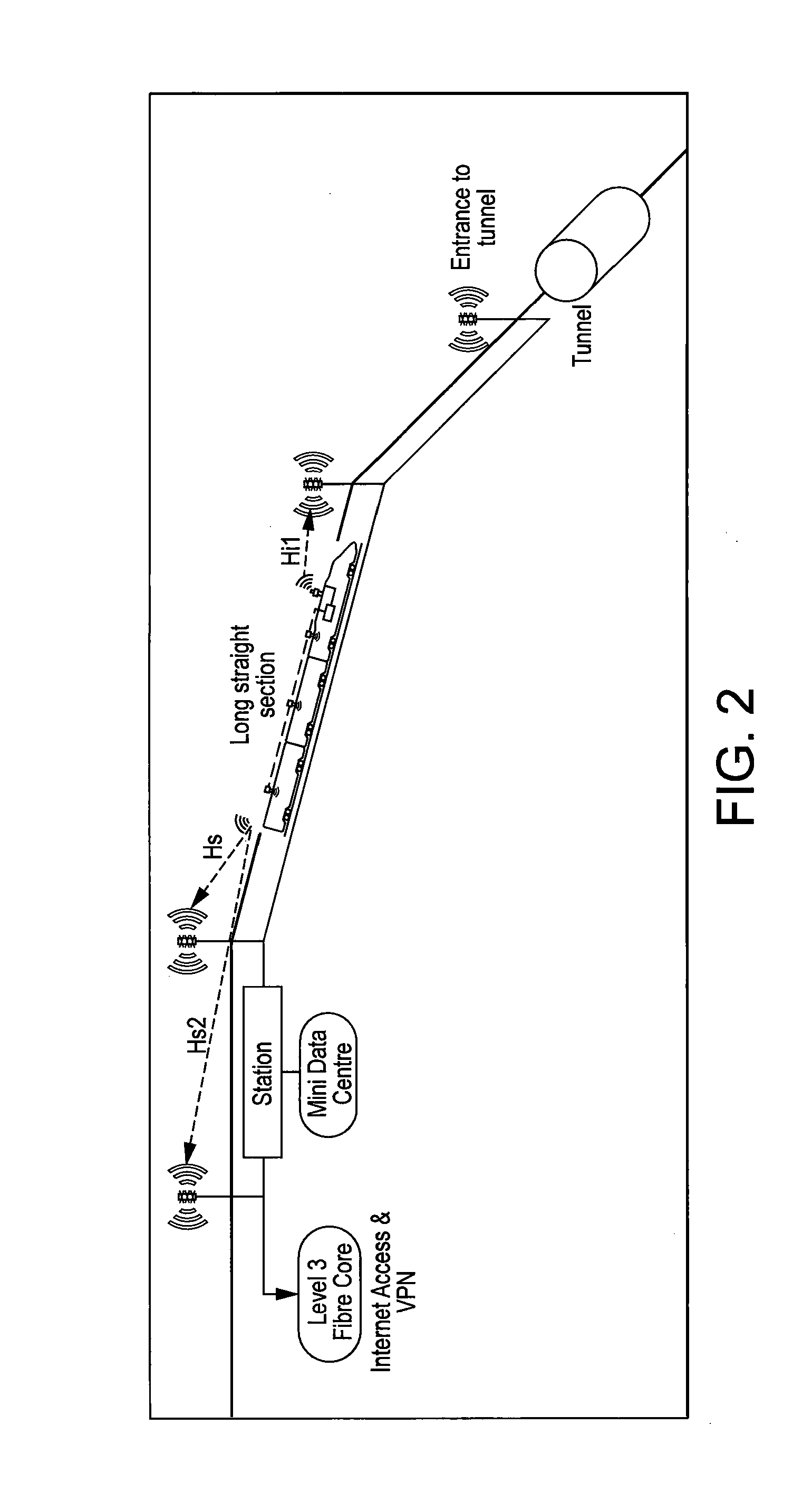High speed communication for vehicles
a high-speed communication and vehicle technology, applied in the field of cellular communication network network network entity, can solve the problems of high data rate service provision, high speed service provisioning for mobile terminals, and increased compensation difficulty, so as to increase the aggregate data rate, increase the throughput, and reduce the likelihood of outage
- Summary
- Abstract
- Description
- Claims
- Application Information
AI Technical Summary
Benefits of technology
Problems solved by technology
Method used
Image
Examples
first embodiment
[0071]Referring first to FIG. 1, there is shown a schematic diagram of a system in accordance with the invention. This embodiment relates to a train service. There is provided: antenna masts 10; a train 20, travelling along direction 30; and backhaul interconnects 40. The antenna masts 10 comprise: a forward facing sector antenna 11; a rear facing sector antenna 12; and a mast 13. Each sector antenna is coupled to a separate, respective access point. The sector antennas are directional and the rear facing sector antenna 12 points in the opposite direction along the railway track from the front facing antenna 11. The backhaul interface 40 is preferably a fibre optic cable that follows the course of the railway.
[0072]The train 20 has a front modem and antenna 21 (a first communications system) and a rear modem and antenna 22 (a second communications system). The first and second communications systems have a common controller and are considered a single mobile terminal. More than two ...
second embodiment
[0083]Referring to FIG. 9, there is depicted a schematic diagram of a network element in accordance with the present invention. This network element may represent a separate part of the system and can work together with the embodiment shown in FIG. 1 or with other embodiments. The network element 90 receives location and / or movement data 91 for a mobile terminal, along the lines discussed above. The network element 90 comprises: a location prediction engine 92; a configuration output 93; and a configuration signal 94.
[0084]The location prediction engine 92 predicts a location for the mobile terminal at a predetermined time, based on the received location and / or movement data 91. Then, it passes the predicted location to the configuration output 93, which determines a strategy for coordinated communication with the mobile terminal at the predetermined time, based on its predicted location. Then, the configuration output 93 provides a configuration signal 94, which configures two or m...
PUM
 Login to View More
Login to View More Abstract
Description
Claims
Application Information
 Login to View More
Login to View More - R&D
- Intellectual Property
- Life Sciences
- Materials
- Tech Scout
- Unparalleled Data Quality
- Higher Quality Content
- 60% Fewer Hallucinations
Browse by: Latest US Patents, China's latest patents, Technical Efficacy Thesaurus, Application Domain, Technology Topic, Popular Technical Reports.
© 2025 PatSnap. All rights reserved.Legal|Privacy policy|Modern Slavery Act Transparency Statement|Sitemap|About US| Contact US: help@patsnap.com



